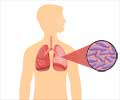Drug-resistant tuberculosis could threaten India's progress in using the Revised National Tuberculosis Control Program to stem the spread of the disease, Union Health and Family Welfare Minister
Drug-resistant tuberculosis could threaten India's progress in using the Revised National Tuberculosis Control Program to stem the spread of the disease, Union Health and Family Welfare Minister Anbumani Ramadoss said Friday at the 62nd National Conference on Tuberculosis and Chest Diseases in New Delhi, The Hindu reports.
About 3% of new TB cases are believed to be drug-resistant, according to a study conducted in the Indian states of Gujarat and Maharashtra, Ramadoss said. The two states have been using DOTS Plus for the management of multi-drug resistant TB since early this year, and the program is scheduled to be expanded to other states by 2009 or 2010, Ramadoss said.Improving treatment quality and promoting the effective use of TB drugs are necessary to help prevent the spread of drug-resistant forms of the disease, he added. It also is important that researchers continue with development of a vaccine to combat TB.
According to Ramadoss, RNTCP is one of the few DOTS programs in the world that has guidelines about public-private partnerships. He said that public-private partnership programs in a number of Indian cities have recorded additional TB case detection of between 15% and 45%. He said that coordinated HIV/TB programs, implemented by both RNTCP and the National AIDS Control Organization, would be scaled up to cover 14 states.
The number of coordinated HIV/TB programs has more than doubled since 2005, Ramadoss said, adding that this represents a "quantum jump ... in the number of cross referrals between the two programs." He added that a 10-point TB counseling tool had been developed by RNTCP for use in voluntary counseling and testing centers.
An estimated one in five new TB cases worldwide occurs in India, Ramadoss said, adding that since RNTCP was initiated, more than 7.8 million people have been treated for TB using DOTS. More than 85% of active TB cases are successfully treated using RNTCP. RNTCP uses strategies from the Global Plan to Stop TB, 2006-2015 as a means to achieve the United Nations Millennium Development Goals.
Ramadoss said to achieve these targets, the basic DOTS program must be maintained, while other aspects of the program are enhanced. He said a national laboratory network to improve the diagnosis of MDR-TB needs to be implemented to overcome the challenges posed by states that have weaker health systems. He said those states also should focus on strengthening treatment for MDR-TB, improving TB screening among people who are HIV-positive and collaborating with other health care providers in the country.
Advertisement
LIN/P









